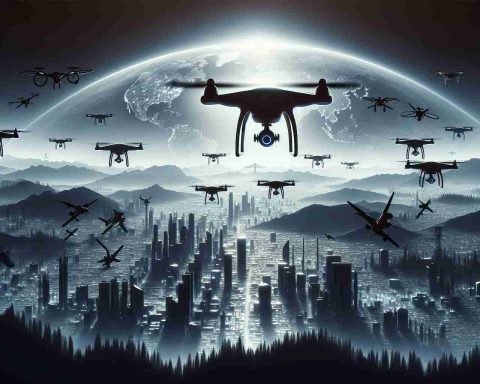The UK Home Office has announced a major investment in satellite surveillance aimed at monitoring migrants attempting to cross the English Channel. The controversial plan comes with a price tag of £15 million, secured through a contract with Telespazio UK, a company noted for its space operations expertise.
This innovative initiative is intended to fortify the capabilities of the Joint Maritime Security Centre, enhancing the UK’s maritime surveillance. The technology being deployed will allow for the detection of “dark targets”—vessels that do not emit standard tracking signals. This means small boats often used by illegal immigrants and vessels involved in smuggling operations can be tracked more effectively.
The contract, which began in November and runs through September of next year, also underlines the necessity for continuous technological advancements, with bi-annual reviews mandated to keep the systems cutting-edge.
In recent years, the number of migrant crossings has surged, with over 36,000 arrivals recorded this year alone. Critics, including the Shadow Home Secretary, argue that the funds could be better utilized on deportation efforts rather than surveillance. As the issue of illegal immigration continues to escalate, the government is bolstering its response by recruiting more personnel for investigations and collaborating with European counterparts to combat human trafficking.
With ongoing discussions regarding the effectiveness of these measures, the UK’s strategy toward managing maritime security and migration remains a contentious topic.
Revolutionizing Maritime Security: The UK’s £15 Million Satellite Surveillance Initiative
Overview of the Initiative
The UK Home Office’s recent investment in satellite surveillance marks a significant step in addressing the complexities of maritime security, particularly concerning the ongoing challenges posed by migrant crossings in the English Channel. The contract, valued at £15 million, has been awarded to Telespazio UK, a recognized leader in space operations, to enhance the monitoring of vessels attempting illegal crossings.
Features of the Surveillance Technology
The initiative aims to bolster the capabilities of the Joint Maritime Security Centre. Key features of the new surveillance technology include:
– Detection of Dark Targets: It enables authorities to track vessels that do not emit traditional tracking signals, often utilized by smugglers and migrants.
– Continuous Technological Upgrades: The contract stipulates bi-annual reviews to ensure the technology remains state-of-the-art, adapting to evolving threats.
Use Cases
This technology is expected to be pivotal in:
– Intercepting Smuggling Operations: By tracking unregistered vessels, authorities can disrupt human trafficking and smuggling networks more effectively.
– Monitoring High-Risk Areas: The capability to identify ‘dark targets’ allows for more stringent monitoring of specific maritime regions known for illegal crossings.
Pros and Cons
Pros:
– Enhanced surveillance capabilities can lead to more effective deterrence of illegal crossings.
– Real-time data may facilitate quicker responses from maritime authorities.
Cons:
– Critics argue that investment in surveillance might detract from essential humanitarian solutions or deportation efforts.
– There are concerns regarding privacy and the extent of governmental monitoring.
Pricing and Budget Considerations
Securing a £15 million contract highlights the financial commitment the UK government is making to strengthen its maritime border security. This financial input signifies the rising priority of addressing illegal immigration issues, especially amidst increasing public concern.
Current Trends and Future Insights
There has been a substantial increase in migrant crossings, with over 36,000 arrivals reported this year, reflecting an ongoing trend that places pressure on governmental resources. As maritime security continues to evolve, investments in advanced technology like satellite surveillance are becoming a cornerstone of national security strategies.
Conclusion: A Contentious Approach to Migration Management
The strategy adopted by the UK government—focusing on surveillance rather than addressing underlying issues—has sparked debate. While some view it as a necessary measure to enhance border security, others criticize it as an inadequate response to complex migration challenges.
For more information on the UK government’s efforts on immigration and security, visit the official government website.



















